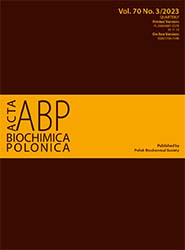An mRNA-based reverse-vaccinology strategy to stimulate the immune response against Nipah virus in humans using fusion glycoproteins
Abstract
The zoonotic pathogen, Nipah virus, is considered a potential healthcare threat due to its high mortality rates and detrimental symptoms like encephalitis. Ribavirin, an antiviral drug helps in overcoming the number of casualties and reducing the mortality rate, but no long-lasting solution has been proposed yet putting global health security in jeopardy. Given the cognizance of mRNA-based vaccines as safe and efficacious preventative strategies against pathogens, the current study has utilized the reverse-vaccinology approach coupled with immunoinformatics to propose an mRNA-based vaccine candidate against the Nipah virus. To ensure the effectiveness of the vaccine candidate against all strains of Nipah and associated viruses, three fusion glycoproteins from Nipah and Hendra viruses were selected. A total of 30 potential epitopes, 10 B-cell-, 10 MHC-I-, and 10 MHC-II-specific, were screened for the construct. The finalized epitopes were highly antigenic with scores ranging from 0.75 to 1.7615 at a threshold of 0.4 for viruses and non-homologous to Homo sapiens eradicating any chance of immune tolerance. The construct, with a World population coverage of 97.2%, was structurally stable, thermostable, and hydrophilic with indices of 32.91, 93.62, and –0.002, respectively. The vaccine candidate’s tertiary structure was predicted with a TM score of 0.131 and the refined model displayed superlative RAMA improvement (98.2) and MolProbity score (0.975). A quality factor of 93.5421% further validated the structural quality and stability. A prompt and stable immune response was also simulated, and the vaccine candidate was shown to eliminate from the body within the first five days of injection. Immune complexes count of 7000 mg/mL was predicted against the antigen with a small but nonsignificant danger signal, countered by the cytokines. Lastly, strong molecular interactions of the vaccine candidate with TLR-3 (331.09 kcal/mol) and TLR-4 (-333.31 kcal/mol) and molecular dynamics simulation analysis authenticated the immunogenic potential of the vaccine candidate. This vaccine candidate can serve as a foundation for future in-vitro and in-vivo trials to minimize or eradicate the diseases associated with the Nipah virus or the Henipaviral family.
Copyright (c) 2023 Muhammad Naveed, Sarmad Mehmood, Tariq Aziz, Muhammad Hammad Arif, Urooj Ali, Faisal Nouroz, Christos Zacharis, Metab Alharbi, Abdulrahman Alshammari, Abdullah F. Alasmari

This work is licensed under a Creative Commons Attribution 4.0 International License.
Acta Biochimica Polonica is an OpenAccess quarterly and publishes four issues a year. All contents are distributed under the Creative Commons Attribution-ShareAlike 4.0 International (CC BY 4.0) license. Everybody may use the content following terms: Attribution — You must give appropriate credit, provide a link to the license, and indicate if changes were made. You may do so in any reasonable manner, but not in any way that suggests the licensor endorses you or your use.
Copyright for all published papers © stays with the authors.
Copyright for the journal: © Polish Biochemical Society.


